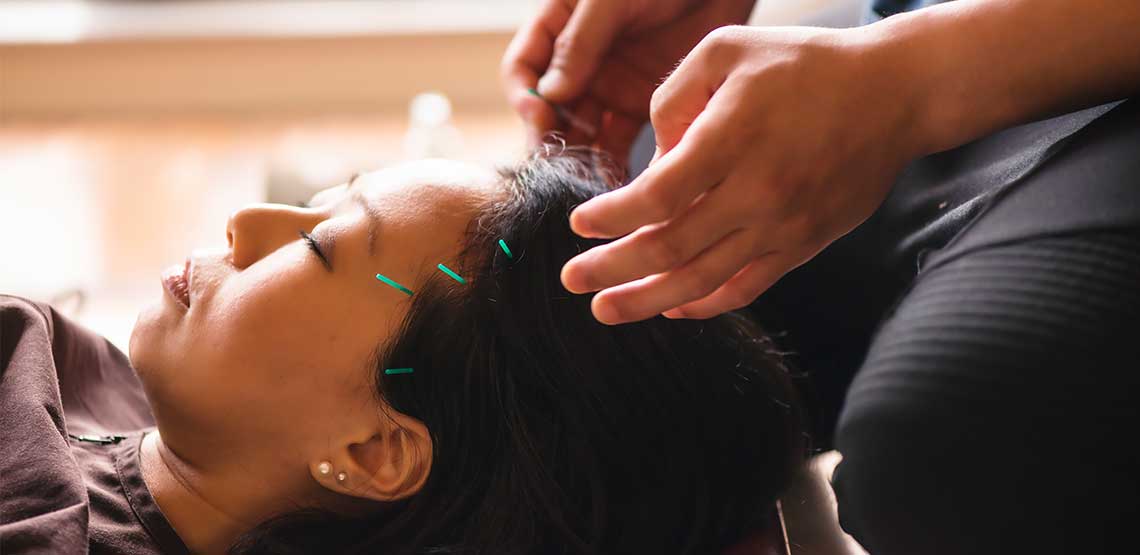Exploring the Benefits of Acupuncture
Modern medicine is truly a miracle for so may ailments, but sometimes in the interest of treating certain health conditions, alternative or holistic types of treatment can be a hugely beneficial part of a treatment plan; in this way, they can be seen as complementary treatment.
Enter, acupuncture, an alternative practice that provides pain relief and benefits to many.
In this article we will explore the art and practice of acupuncture, going over what it is and how it is practiced, uncovering the origins of acupuncture and how it has been passed down over generations, plus go over different types of acupuncture and discuss the potential benefits of acupuncture.
What Is Acupuncture?
Before we go any further, exactly what is acupuncture? Even if you haven’t experienced it firsthand, you’ve probably seen or heard of the practice. Acupuncture involves strategically inserting very thin, small needles into the body, specifically into pressure points that can help to ease pain.
Acupuncture has caught on across the entire globe, but has its basis in Chinese tradition and eastern medicine. It’s not practiced by “modern” western practitioners, but by those specially trained in this alternative form of healing.
Proponents of acupuncture believe it can boost overall health and well-being and even cure issues like chronic pain, headaches and various other ailments.
However, while many will attest to its benefits from experience, hard science proving its effectiveness is still sparse, so it has been seen as somewhat controversial or contested.
How Does It Work?
Preliminary Evaluation
Before beginning the procedure, your acupuncturist will ask you a series of questions to learn about your pain or symptoms. Unlike modern medicine that typically deals with the physical body, your practitioner may also dig deeper into your lifestyle and mental and emotional state to decide on how exactly to treat you.
Procedure
When receiving acupuncture, you will lie on a padded table and over the course of minutes to up to an hour, you’ll have various needles — generally between five and 20 — inserted into certain points of your body. It’s generally totally painless and you may not even feel the needles at all.
The Origins of Acupuncture
As mentioned, acupuncture has its origin in ancient Chinese medicine. It is believed in Chinese medicine that all ailments or disease are based in an overall lack of balance in the human body’s life forces. There are two opposing forces or elements are known as “yin” and “yang”; when these two are imbalanced it can create discord of the life force known as “qi” (pronounced like “chi.” Acupuncture is a way to reset this balance to restore health.
Another belief central to acupuncture is that the qi life force flows through all our bodies via pathways or meridians in the body. Acupuncture needles are used to specifically target these pathways and help correct the energy flow.
Related Search Topics (Ads)
Different Types of Acupuncture
The most well-known form of acupuncture is the typical type of small needles being inserted into the body in various points. This is known simply as body acupuncture, but other more specialized types do exist, including:
Ear Acupuncture
In traditional Chinese medicine it’s believed the ears have very powerful pressure points that when manipulated, can have healing effects throughout the body. With this type of acupuncture, needles are placed in the ear and are sometimes left for longer periods of time.
Acupressure
This form of acupuncture might be a good option for those squeamish about needles, as it borrows from the same school of thought as standard acupuncture, but instead involves massage. The practitioner may apply pressure and massage certain areas or teach the patients how to do this to themselves at home.
Electroacupuncture
As the name suggest, this is a “heightened” type of regular acupuncture that still involves placing needles into specific areas of the body to relieve pain or symptoms. However, it also involves the addition of small clips placed on the needles that send electrical waves between two points to facilitate with healing.
Cupping
A technique that’s been gaining some popularity among athletes and celebrities, cupping is often done at the same appointment as a traditional acupuncture session. It works by balancing energy while also applying suctioned cups to the body to help break up stagnant energy flows.
Various other techniques and tools may be added to the practice of body acupuncture to further help with healing. This could be heat, herbs that are attached to the needles, or magnets used in conjunction with the needles.
What Is Acupuncture Used for?
Acupuncture is often used as an alternative treatment to modern medicine or to compliment more standard practices and can provide benefits to a wide array of ailments, such as:
- Allergies
- Headaches, including migraines
- Neck or back pain
- Menstrual cramps
- Labor pain
- Side effects of chemotherapy
- Arthritis pain
Potential Benefits of Acupuncture
While the benefits of acupuncture are still being tested in the scientific world, The World Health Organization did release a list of ailments in 2003 they say acupuncture has been proven to help with, including:
- High and low blood pressure
- Morning sickness
- Menstrual pain
- Dental pain
- Tennis elbow
- Sciatica
- Facial pain like headaches
- Sprains
- Rheumatoid arthritis
Before You Try It
If you’re considering trying acupuncture, make sure to find a certified and trusted practitioner with experience in this field. If you are pregnant or dealing with underlying illness, be sure to make sure it’s safe to proceed before your first appointment.
If you have been dealing with issues that modern medicine hasn’t healed or you just want to explore an ancient holistic form of healing that has provided relief to many, acupuncture may be a good option for you.


